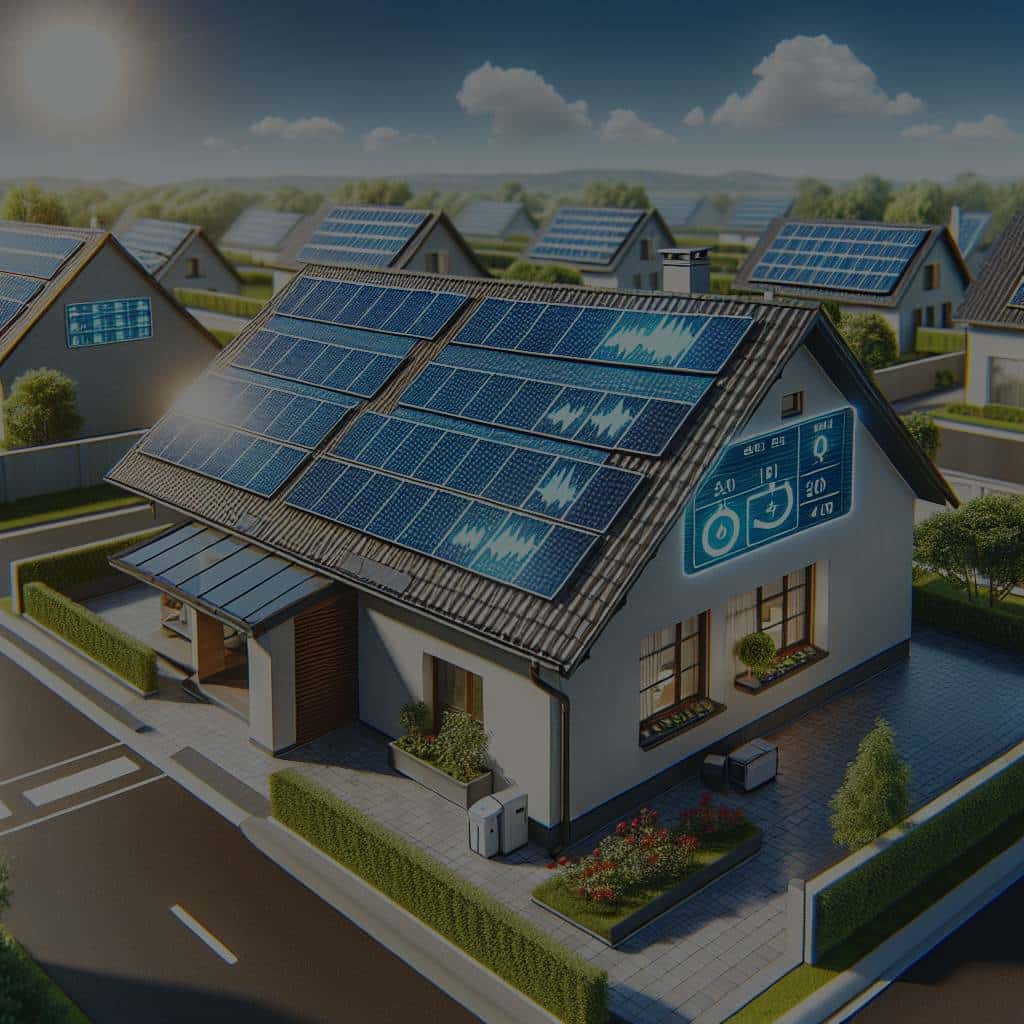What’s the Best Solar Panel Configuration for a Home with Limited Roof Space?

You’ve made the decision to go green and adopt solar energy as the primary source of power for your home. You’ve done your research about the environmental and cost benefits of using solar panels. You’re aware of the efficiency of these systems and how they convert sunlight into electricity. However, you have one concern: your home has limited roof space. What is the best solar panel configuration in such a scenario? This article explores the answers to this question and guides you on how to maximize your solar energy output.
Understanding Solar Panel Basics
Before we delve into finding the optimal configuration, it’s vital to understand the key components and workings of solar panels. The heart of a solar panel is the solar cells, which are tiny semiconductor devices that convert sunlight into electricity. When sunlight strikes the cells, it dislodges electrons, which are captured and harnessed to generate an electric current.
This might interest you : How Can You Integrate a Cozy Scandinavian-Style Fireplace in a Modern Apartment?
The efficiency of a solar panel refers to how well it can convert sunlight into usable electricity. Higher efficiency means you’ll need fewer panels to generate the same amount of electricity, making it an important consideration for homes with limited roof space. Several companies offer high-efficiency solar panels; however, they may come at a higher cost. It’s crucial to balance the efficiency and cost when choosing the best system for your home.
Maximizing Efficiency with Limited Roof Space
If your roof space is limited, maximizing efficiency is essential. The best kind of panels to use in such a scenario would be monocrystalline solar panels. These panels are known for their high efficiency and sleek appearance, making them ideal for homes with less roof space. They take up less space due to their high efficiency, which means you can install more panels and generate more power.
Also read : What’s the Best Way to Create a Spacious Feeling in a Small Master Bedroom Suite?
When installing these panels, it’s important to consider the direction they will face. In the Northern Hemisphere, solar panels should face south to receive the most sunlight. However, if this is not possible, east or west-facing panels can still generate a significant amount of power.
Ground-Mounted Systems: An Alternative to Roof Installations
If your roof cannot accommodate enough solar panels to meet your energy needs, you might want to consider ground-mounted systems. Ground-mounted systems are installed on the ground rather than on your roof, providing a great alternative for homes with limited roof space. This option allows for more flexibility in the direction and angle at which your panels are installed, ensuring they get the maximum amount of sunlight throughout the day.
Choosing a ground-mounted system, however, requires sufficient yard space and could potentially affect your landscape aesthetics. Ground-mounted systems might also be more costly to install compared to roof installations, as they require additional hardware and labor.
Solar Panel Trackers for Optimal Sunlight Capture
Solar panel trackers are another fantastic option to optimize the performance of your solar energy system. These devices allow your solar panels to follow the sun’s path across the sky, ensuring they always receive the maximum amount of sunlight. By keeping your panels optimally oriented towards the sun, trackers can significantly increase their output, making them an attractive option for homes with limited roof space.
Keep in mind, however, that solar panel trackers come with additional installation and maintenance costs. Therefore, consider the long-term costs against the potential increase in energy output before investing in a tracking system.
Efficient Use of Available Space with Solar Shingles
If you’re concerned about the aesthetics of traditional solar panels or simply don’t have enough roof space, solar shingles might be the perfect solution. Solar shingles, also known as photovoltaic shingles, are a type of solar energy solution that doubles as roofing material. They are installed in place of regular shingles and provide the same protection against weather elements.
Despite being smaller in size compared to traditional solar panels, solar shingles are highly efficient and provide a seamless look to your home. However, they do come at a higher cost and might require a specialized installation process.
Choosing the best solar panel configuration for a home with limited roof space can be tricky. However, as illustrated above, many efficient and space-saving options are available. It’s essential to consider the cost, system efficiency, and your home’s specific needs when choosing between these options. Remember, the goal isn’t just to install solar panels – it’s to maximize their performance for optimal energy production.
Community Solar Farms: An Innovative Solution
For homeowners with limited roof space or those living in condos or apartments, community solar farms present a novel solution. These are large-scale solar installations where multiple people can own a share or lease. Each participant in a community solar project receives credit on their electricity bill for the power produced by their share of the solar farm. This option allows you to benefit from solar power without needing the physical space for a solar system at your residence.
Community solar farms are managed by solar companies that handle everything from installation to maintenance and repair. This takes the pressure off the homeowner and ensures the best solar panel system is used for maximum performance. Moreover, participants have the advantage of accessing low-cost, green energy without worrying about the installation, upkeep, or even the initial cost of buying the solar panels.
However, the availability of community solar farms is dependent on your location, as they are not offered everywhere. Also, the pros and cons of this option need to be weighed before committing. For instance, though you may reduce your energy bills, you may not have the capacity to become completely energy independent, unlike with a home solar installation.
Conclusion: Selecting the Right Configuration
Choosing the right solar panel configuration for homes with limited roof space requires careful consideration of various factors. High-efficiency solar panels, like monocrystalline panels, can help maximize the solar power output in a small area. Ground-mounted solar systems provide an excellent alternative if you have enough yard space. Solar panel trackers can boost the panel efficiency, allowing for an enhanced energy yield. Solar shingles offer an aesthetically pleasing and space-efficient solution, while community solar farms open the door to solar energy for homes that can’t accommodate a personal solar system.
In the end, the best solar configuration for you will depend on your specific circumstances, including your budget, your property’s characteristics, and your energy needs. Consulting with reputable solar companies and obtaining multiple quotes can help you make an informed choice.
Remember, the introduction of thin-film solar cells and improvements in solar technology continue to enhance the options and efficiency of solar systems. Hence, adopting solar energy remains a viable and sustainable choice for homes with limited roof space. The future of solar power is promising, and the opportunity to contribute to a cleaner, greener world has never been more accessible.
